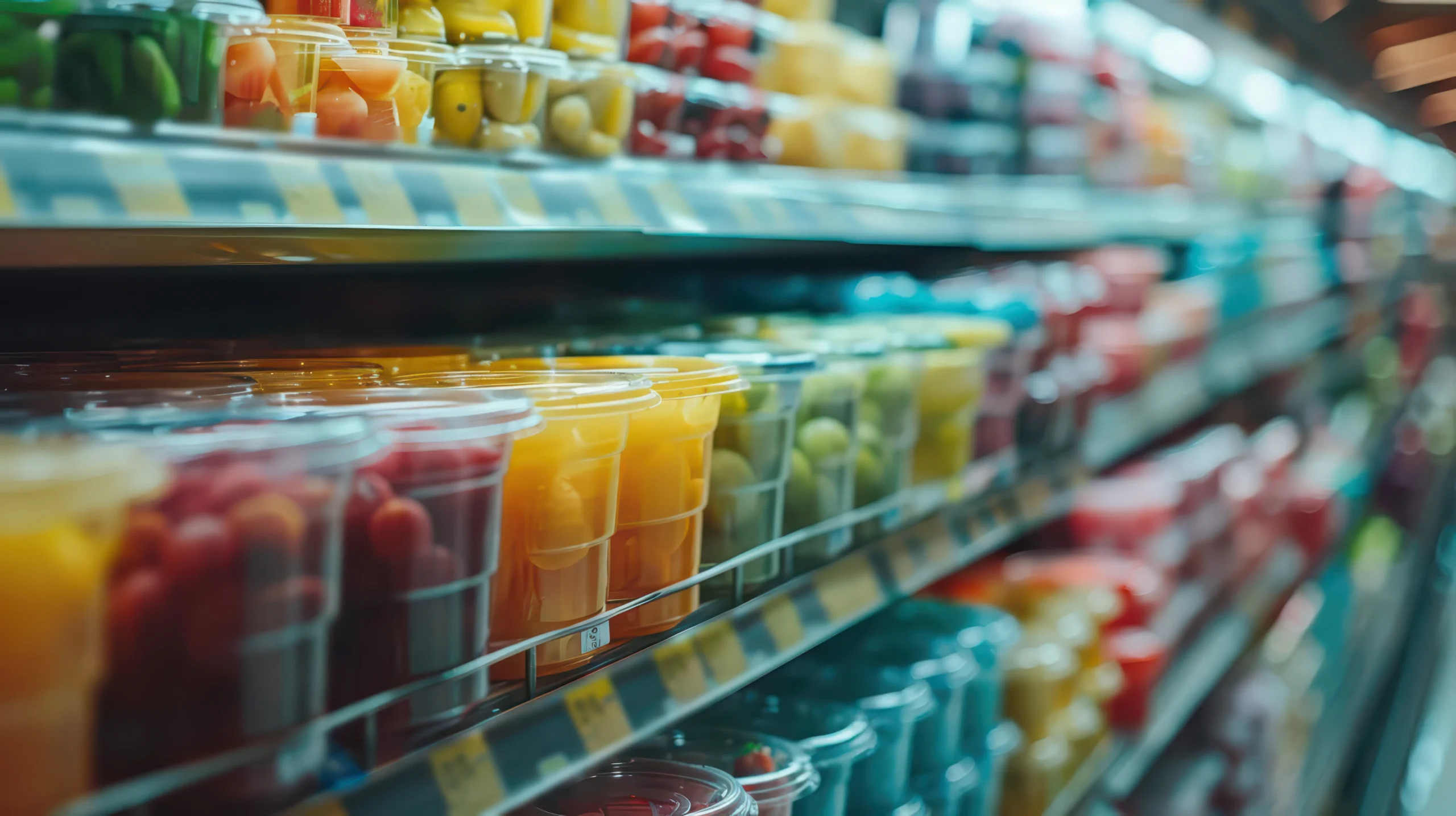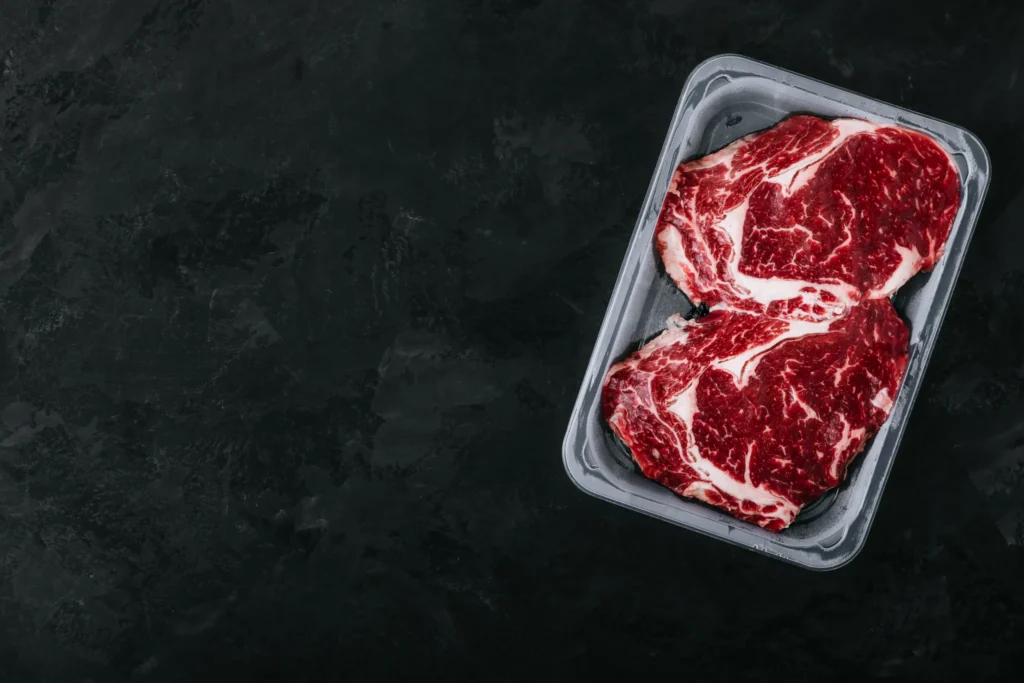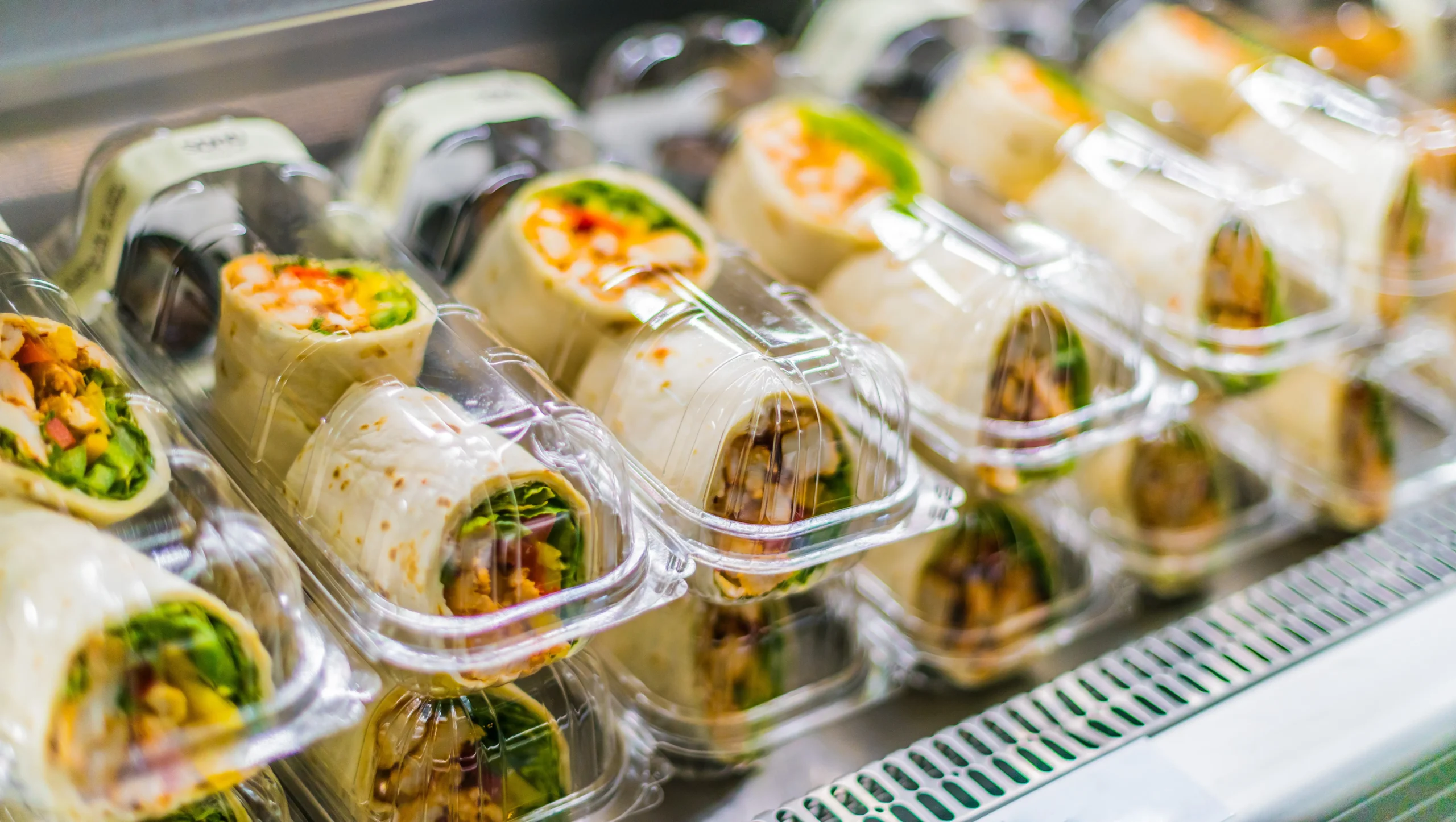Plastic Food Packaging: Ensuring Safety and Freshness in a Competitive Market

Plastic food packaging carries more pressure than ever. From airtight regulations to evolving consumer expectations, all while keeping pace with automation and cost control.
For food producers, that pressure shows up in the form of tighter tolerances, more frequent line changes, and less margin for error. One weak link in the packaging — a seal that fails, a tray that won’t denest, a material that doesn’t meet compliance — and the entire product is at risk.
This is the reality for producers competing across categories like fresh produce, meat, dairy, prepared meals, and frozen foods. In each case, packaging plays a pivotal role in how food stays safe, fresh, and ready for consumers.
This post explores what high-performance plastic packaging must deliver in today’s market — and how working with the right partner helps you solve for safety, speed, and shelf appeal from day one.
What Food Producers Need from Packaging Today
Producers in the food and beverage industry operate in environments shaped by real constraints and real consequences. Whether they’re supplying a major grocery retailer, serving foodservice clients, or scaling up a direct-to-consumer offer, the packaging used can be the difference between growth and risk exposure.
Plastic food packaging has to solve for:
- Safety: Preventing contamination and meeting regulatory standards is non-negotiable. Mistakes here risk product recalls and irreparable brand damage.
- Freshness: The visual and physical condition of food directly impacts how it’s perceived and how long it stays viable for sale.
- Automation: Packaging must perform flawlessly on high-speed filling and sealing lines — poor denesting, misalignment, or deformation means downtime and rework.
- Differentiation: Shelf appeal and ease-of-use still matter. Consumers make quick judgments, and packaging must communicate safety and quality at a glance.
None of these demands exists in isolation. Meeting them requires a packaging partner who understands how safety, automation, freshness, and shelf impact work together — and who can design proactive solutions that perform under real-world pressure.

Key Safety Features in Plastic Food Packaging
Food packaging must physically protect what’s inside. That starts with selecting the right materials, but it doesn’t end there. Performance depends just as much on structural design, manufacturing precision, and sealing compatibility.
Key Safety Factors in Plastic Packaging Design:
- Material compliance: Packaging materials must meet FDA and CFIA standards for food contact. That includes resin choice, additives, and how the material performs under heat and pressure.
- Seal integrity: Whether you’re using perimeter seals, button locks, or MAP-compatible heat seals, consistency is critical. An unreliable seal exposes the product to contamination, moisture, and air — all of which shorten shelf life and create risk.
- Structural strength: Trays need to hold up under stacking, shipping, and refrigeration without cracking or warping. Weak corners, flimsy flanges, or under-engineered walls create points of failure.
- Clean manufacturing: Food packaging often requires production in cleanroom-adjacent environments with strict sanitation and handling controls. Quality control processes must support traceability and food safety protocols.
Whether you’re refining an existing design or launching a new product, Elmes works with your team to ensure packaging safety is never left to chance. We align material selection, structural integrity, and seal performance with your production environment, so your packaging holds up where it counts.
Packaging Design That Extends Shelf Life
The right packaging can significantly extend the life of a food product without relying on excessive preservatives or overly complex logistics. This is especially important in categories where perceived freshness drives purchase: produce, deli, meat, and ready-to-eat meals.
Freshness-Enabling Design Principles:
- Material barrier properties: Oxygen transmission rate (OTR) and moisture vapor transmission rate (MVTR) must be optimized for the specific food product. Choosing the wrong material — even a high-quality one — can accelerate spoilage.
- Modified Atmosphere Packaging (MAP) compatibility: Many producers use MAP to extend shelf life. Packaging geometry and sealing surfaces must be compatible with these systems to maintain gas levels and prevent leaks.
- Condensation control: Venting features, tray shape, and material thickness can influence internal moisture accumulation. Even something as small as a poorly angled lid can lead to pooled water and product degradation.
- Rigidity and stackability: A distorted tray in transit can press down on its contents, crush delicate items, or create uneven seals — all of which degrade freshness and appearance.
Design decisions that seem minor — like flange height or venting position — can directly affect spoilage rates, leak risks, and shelf-life claims.
Our role is to make sure those decisions are working for you, not against you.

Food Packaging Regulations You Need to Know
Packaging that fails to meet compliance standards can slow you down or even halt your operations entirely. Between CFIA inspections, FDA oversight, and increasing alignment between U.S. and Canadian food safety requirements, packaging design must account for both current rules and what’s coming next.
Common Compliance Challenges:
- Documentation and traceability gaps: Food producers need full transparency around resin sourcing, lot tracking, and production conditions.
- Mislabeled or mispackaged goods: Inadequate packaging design can lead to labelling errors, seal inconsistencies, or mismatched SKUs — which often trigger recalls or rejected shipments.
- Reactive design updates: Waiting to adjust packaging until after a regulatory change comes into effect can lead to costly delays, retooling, or material shortages.
As an FSSC 22000–certified manufacturer and proud member of the Canadian Produce Marketing Association (CPMA), Elmes brings more than compliance — we bring confidence.
These affiliations reflect our commitment to the highest standards of food safety and our deep connection to the industries we serve. From fresh produce to prepared meals, we understand what’s at stake and we’re equipped to help you meet every standard with precision and certainty.

How Packaging Builds Consumer Trust
While safety and freshness are essential behind the scenes, consumers make decisions based on what they can see and feel. Packaging serves as a trust signal, communicating product quality, brand identity, and usability at a glance.
What Consumers Look For:
- Visual clarity: Foggy, warped, or scratched trays can make even fresh product look unappealing. PET and other clear materials help showcase freshness.
- Ease of use: Peelable lids, intuitive openings, and resealable options are no longer bonuses, they’re expected. Especially in single-serve or family-size formats.
- Structural integrity: Flimsy or crushed packaging raises concerns about how food was handled and whether it’s still safe to eat.
- Differentiation: Embossed logos, custom shapes, and smart finishes elevate brand presence while reinforcing quality.
Packaging that commands attention and builds consumer trust never compromises on performance. Every detail — from structural strength to airtight seals — protects freshness and ensures safety. When packaging reflects care and consistency, it becomes a powerful asset that drives confidence, loyalty, and lasting market success.
Why Your Food Packaging Partner Matters
Meeting these demands means thinking beyond off-the-shelf packaging. Success depends on having a packaging partner who understands the complexity of food production — and can design and deliver solutions that meet your goals across the full product lifecycle.
How Elmes Supports Food Producers:
- Design consultation: We collaborate early to optimize tray geometry, flange width, and material thickness for your specific food type and automation setup.
- Material selection: Our team recommends resins that balance clarity, rigidity, barrier properties, and sustainability goals — all while remaining fully compliant.
- Performance testing: We evaluate how packaging performs under real-world conditions, from MAP sealing to cold storage stacking.
- Ongoing support: As your product lines evolve or regulations shift, we’re here to adapt your packaging systems — not just fulfill your orders.
Solving for safety, freshness, compliance, automation, and consumer appeal isn’t simple. But for producers who want to lead, it’s the standard.
The right packaging supports the product, the line, and the brand. Elmes works alongside your team to build systems that hold up in production and stand out in the market. You’ve perfected your product. Now protect it with packaging engineered to perform.
Contact us to explore how Elmes can support your team — from design to delivery.
